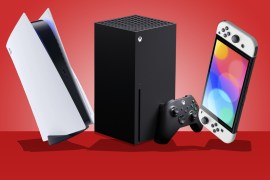Libratone Beat review
Libratone's Beat certainly looks like no other iPod speaker we've seen, but does it perform like no other?

Libratone might sound like the name of a group of astrological fitness freaks, but it’s actually the company behind the rather fabulous Beat wireless iPod speaker.
As is immediately apparent, the Libratone Beat is very different to the likes of the B&W Zeppelin and Geneva Sound Model S iPod docks with which it will inevitably compete. For a start there’s the way it looks: this is a tall, obelisk-like device with just a single button blemishing it’s otherwise furry exterior.
And yes, we do mean ‘furry’ – the Libratone Beat’s outer layer is woollen, of the standard kind on the £560 ‘Slate Grey’ model, and of the cashmere kind on the more expensive Blood Orange, Vanilla Beige and Blueberry Black versions.
Wireless, but no AirPlay
The Libratone Beat’s uniqueness isn’t limited to the way it looks, though. Beneath that fluff lie five drivers that use tech called FullRoom to bounce sound off the walls and expand the soundstage.
Rather than using Apple’s AirPlay system, the Beat creates its own wireless connection to your iThing. In the box you get two dongles, one for your iPod/iPhone/iPad, and one for your computer. The range is about 10m for the first and 30m for the second, and if you’re lucky enough to own a number of Libratone Beats, each one will activate and play your music as you move into range with your dongled-up device.
Sound quality
So how does that music sound? Well, the primary aim of filling the room with sound is certainly achieved. This thin unit spreads your music to every corner, and you get essentially the same delivery whether you’re directly in front or listening from one side.
The only problem is that this does sacrifice some of the directness and impact that the Beat’s rivals offer – It feels like the music is playing in the background, rather than speaking to you directly.
Positional awareness
It’s also worth paying proper attention to Libratone’s suggestions regarding positioning. Yes, the Beat is designed to be flexible and it even has a very handy, um, handle, but it does sound better in some places than others. Packing it tightly into a corner, for example, seriously hampers the Beat’s ability to disperse its sound, while isolating it too far into the room sacrifices bass weight and depth.
Position it about 20cm from a rear wall, though, and it will deliver a weighty sound. It still doesn’t dig quite as deep as the best, or reach the most sparkly highs, but it is an enjoyably punchy, open and fairly detailed presentation with real texture and clarity to vocals.
If you want a direct, focussed delivery with bags of excitement, you’re best off looking elsewhere, but if you’re more after an unusual, unique and classy unit that will fill a room from a very compact foot print, the Libratone is the way to go.



